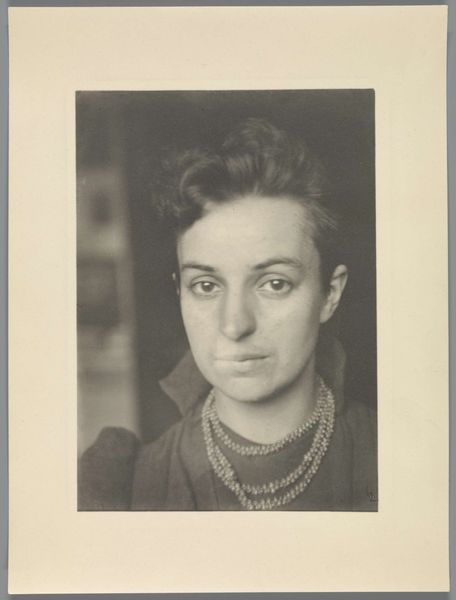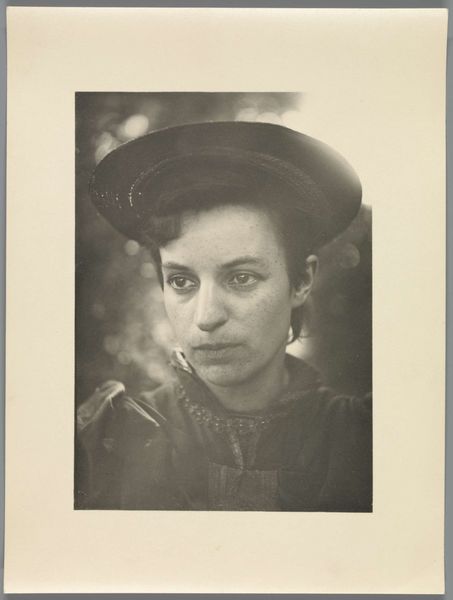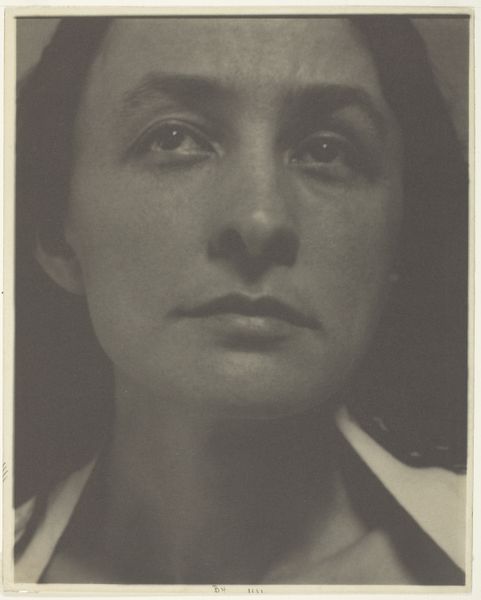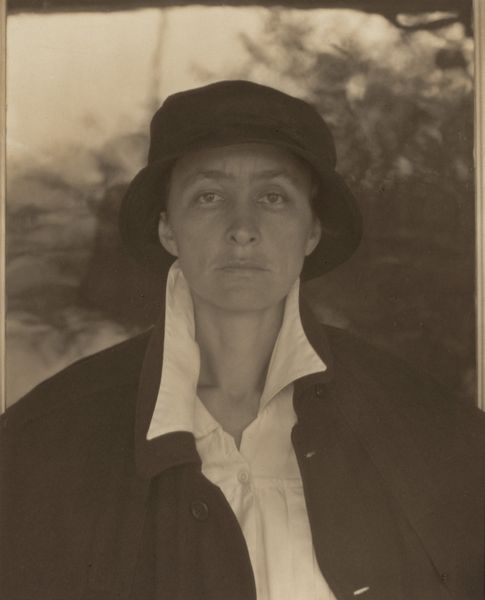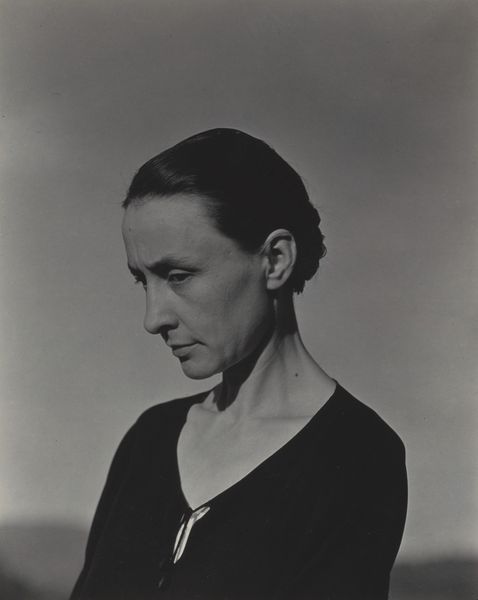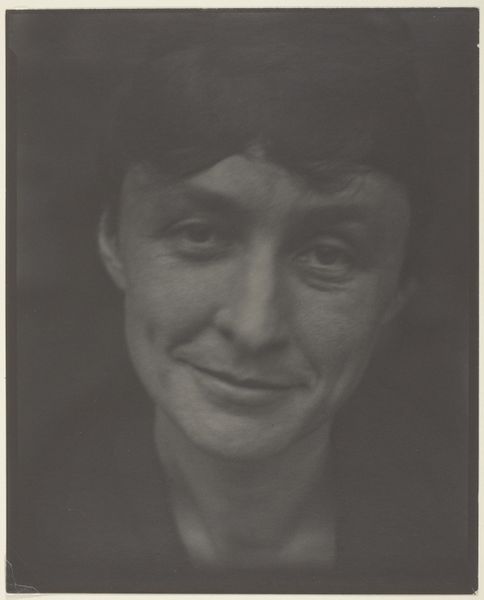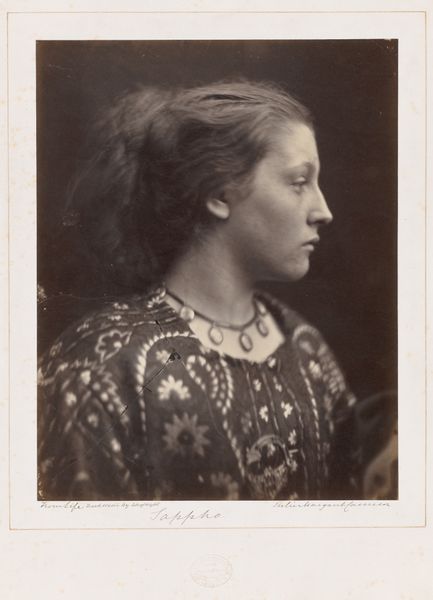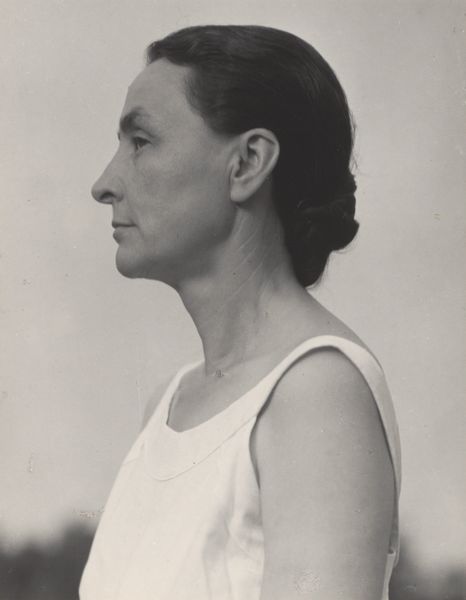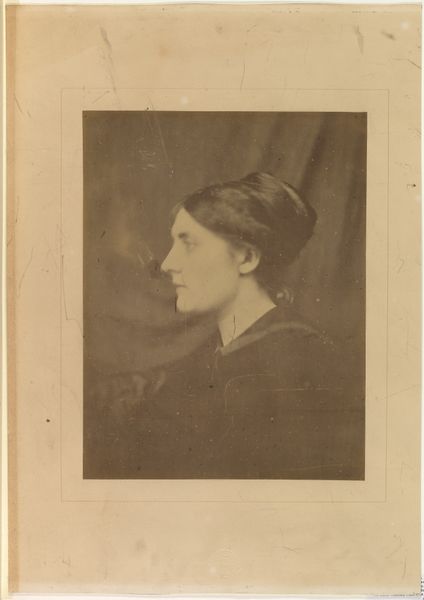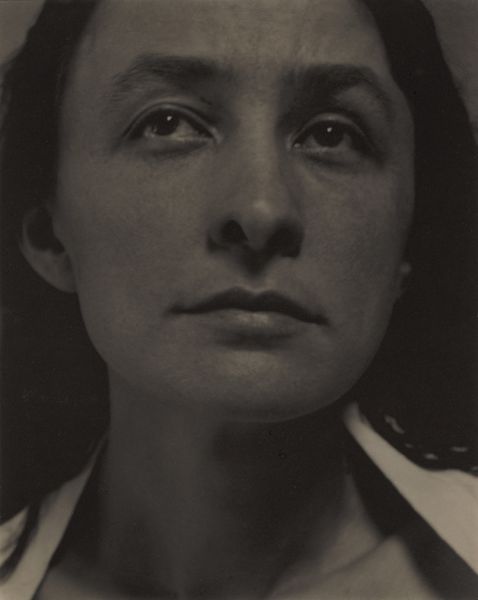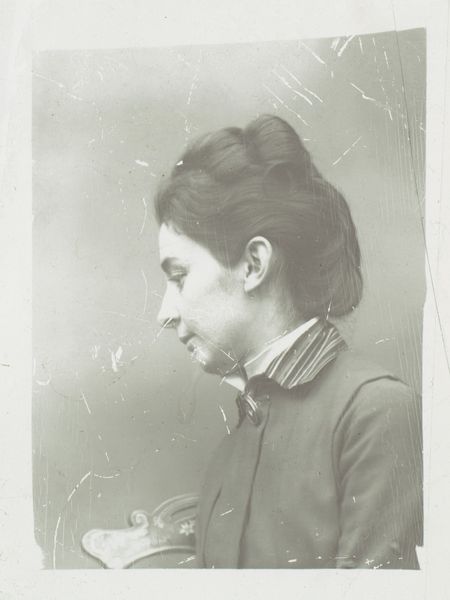
photography
#
portrait
#
pictorialism
#
photography
#
realism
Dimensions: height 231 mm, width 174 mm, height 168 mm, width 119 mm
Copyright: Rijks Museum: Open Domain
Curator: I find myself immediately drawn into the quiet intensity of this portrait. The direct gaze and the muted tones evoke a strong sense of introspection. Editor: Indeed. What you're observing is actually a reproduction of a photograph, thought to be by Willem Witsen. Dating roughly from between 1860 and 1915, it now resides here in the Rijksmuseum. It’s an excellent example of pictorialism, a style that sought to elevate photography to the level of fine art. Curator: Ah, that explains the deliberate artistic quality, then! Pictorialism very much believed in artistic intention overriding the mechanical reality of photography, so what can we glean from this? It challenges notions of representation, wouldn't you agree? Her ambiguous expression, the seemingly everyday clothing… Editor: The sitter's garb may seem simple, yet a pearl necklace adorns her neck. This introduces a dualism – an oscillation between her apparent working-class background and understated, sophisticated tastes. Think of the pearl as an emblem; its luminosity is associated with purity and wisdom across different traditions. Does it reflect on the status of women in the public space at the turn of the century? Curator: Absolutely! The pearl necklace signifies, I feel, a sort of contained femininity within a patriarchal society. Her steady, perhaps challenging gaze suggests agency that flies in the face of Victorian societal expectations. What looks like "realism" on the surface cleverly unveils societal constraints. Editor: What I find particularly evocative is how Witsen manipulated light. Note the soft focus, almost ethereal. It lends the portrait a dreamlike quality, imbuing it with symbolism; as if to elevate the subject to the status of archetypal muse. Curator: Precisely. But isn't she more than a mere muse? This photograph pushes beyond a simple idealized female form, suggesting inner complexities that deserve to be seen, not objectified. Editor: A point well taken. We both came at it from distinct pathways, but ended at very much the same juncture; art endures by the multitude of insights it provides. Curator: In the end, art's function rests on prompting just that kind of discourse about power, society and the self.
Comments
No comments
Be the first to comment and join the conversation on the ultimate creative platform.
